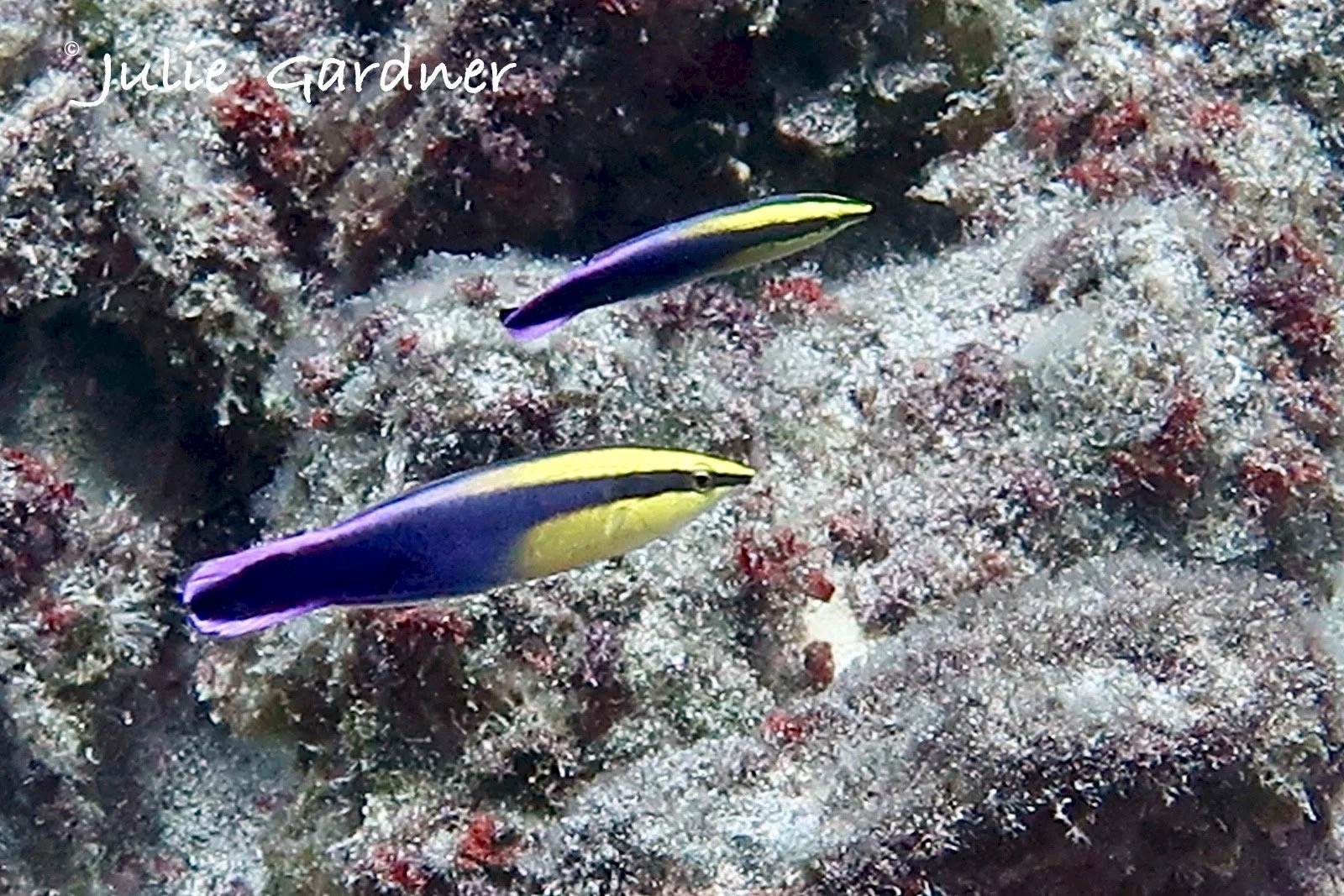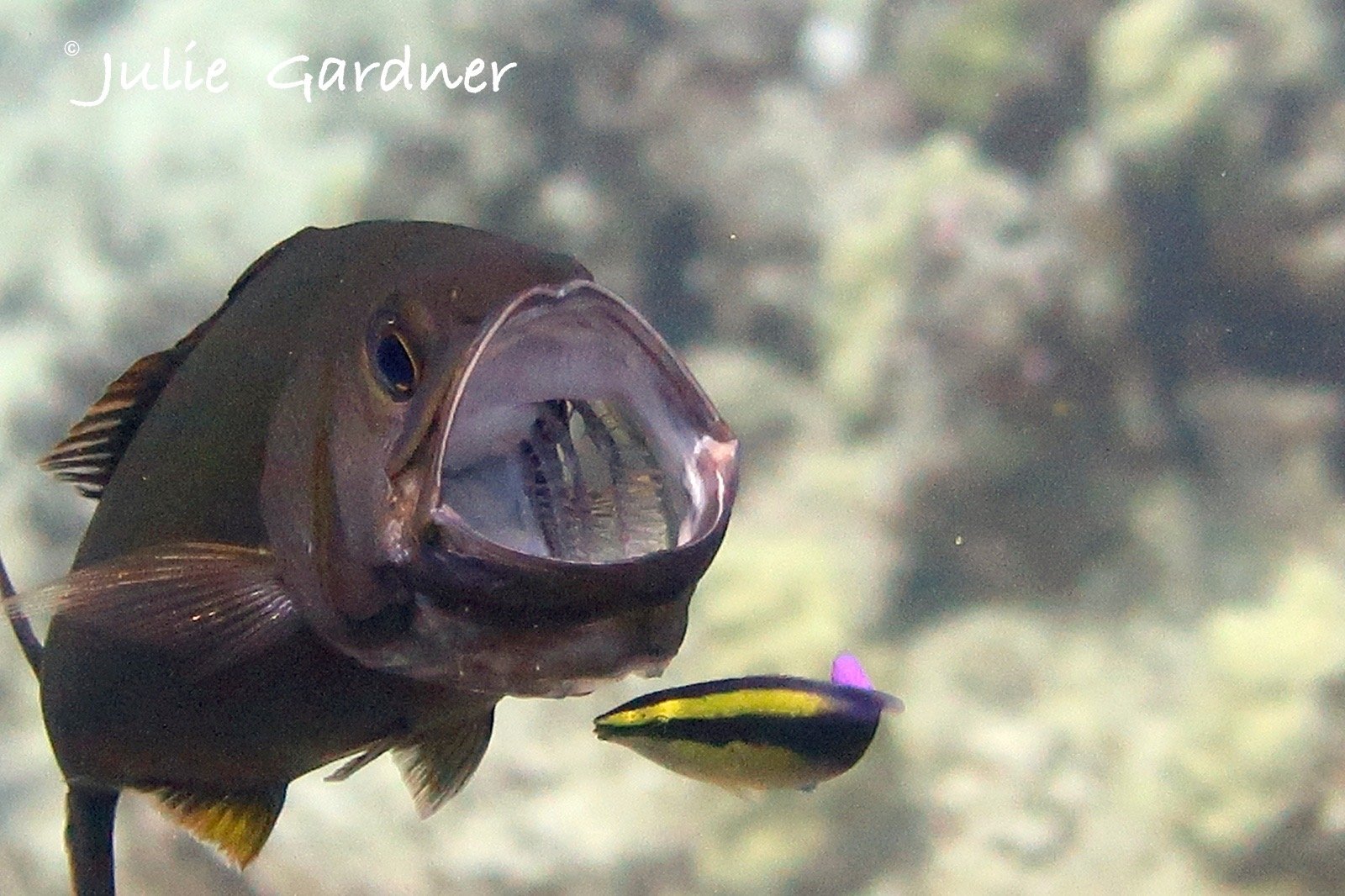The Hawaiian Cleaner Wrasse: Hawaiian Style Pest Control
Visualize being in a car wash line, or waiting for the dental hygienist. Waiting in line is what the reef fish do underwater at a fish "cleaning station." They're in line to be cleaned by Hawaiian cleaner wrasse (Lebroides phthirophagus), small, brightly colored fish that measure about 2 to 4 inches. Whenever you see diverse types of fish in close proximity, look for the little wrasse and watch the interaction.
These small reef fish are neon purple and bright yellow with a black band through the eyes. The juveniles are black with an intense blue line along the back. They are endemic to Hawai'i, that is, unique to this area. The Hawaiian cleaner wrasse move about their territory with a quick darting motion. This dancing, flittering "hula" movement combines with their coloration to advertise a cleaning station. When a host fish swims into position, the cleaner wrasse begins to peck at and remove the parasites on the bodies and in the gills of the fish. The cleaner wrasse are also known to clean green sea turtles.
Male cleaner wrasse maintain a harem in which each female manages her separate cleaning station within the male's territory. As with most reef fish, wrasse broadcast spawn by releasing gametes (eggs and sperm) directly into the water. Fertilization takes place outside the parents. At night, most wrasse species will bury themselves in the sand, but the Hawaiian cleaner wrasse wrap themselves in a mucous cocoon, like parrotfish.
Along with the Hawaiian cleaner wrasse, other small fish and a number of shrimp also pick off external parasites and dead tissue from reef fish. This is vital in the tropics as parasites thrive in the warm water and can interfere with the overall health and respiration of marine species. A research team in the Bahamas conducted a study in which cleaner fish were removed from a protected bay. Within a few weeks, the population and diversity of the fish were reduced by half, demonstrating the vital importance of cleaning stations.
Aquarium enthusiasts may like the look of this brilliant fish but taking them out of their natural environment is destructive in two ways. First, cleaner wrasse do not generally eat food other than their usual parasite diet, and therefore they usually starve in aquariums. In addition, as the Bahama experiment showed, if they're removed from the reef, the health of the fish in the area will be in jeopardy.
In Hawai'i, the cleaner wrasse are probably the most important of all the fish in the shallow reef environment. They set up their cleaning stations on well-defined outcroppings of encrusted corals. While at the station, host fish adopt a motionless listing posture while the cleaner tickles and rubs to get its meal of parasites. Thus, both species mutually benefit from the activity. It's not unusual for to see a cleaner fish or a shrimp cleaning the mouth of a moray eel! This cleaning process could be the only way an animal without appendages to get its many teeth cleaned.
When snorkeling or diving, keep an eye out for these busy little fish. If you don't mind the wait, pause for a moment to let the Hawaiian cleaner wrasse look you over and then, please, keep the line moving!
Photo Contributions: Julie Ann Gardener, Divemaster Fathom Five Divers



